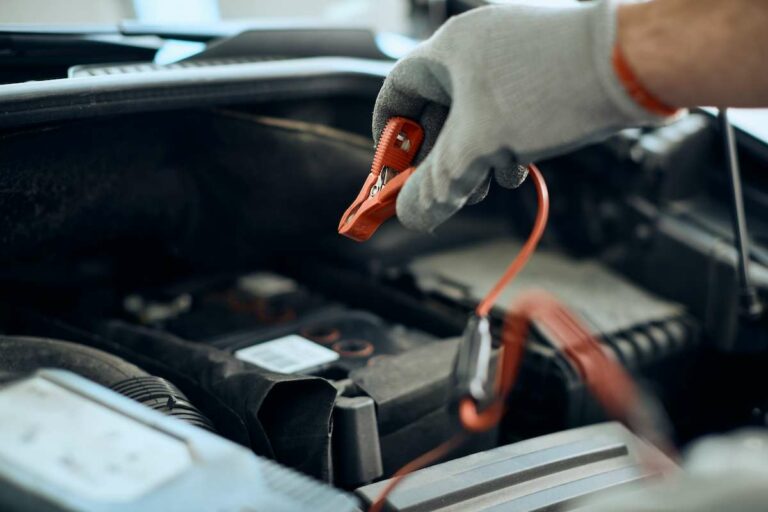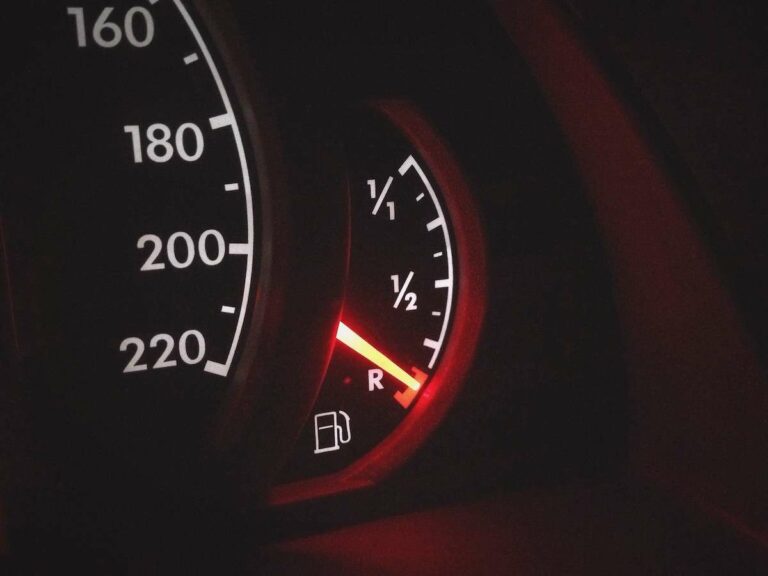Car Accelerating On Its Own? [Reasons & How to Fix!]
Under normal operation, a car’s engine will only rev when you press on the accelerator. A little bit of extra revs when a car starts up is normal to warm up the engine on some cars. But, if your car is accelerating abnormally or on it’s own, here’s how to fix this issue.
If your car is accelerating on its own, chances are that the throttle body is dirty or one of its components has failed. Other factors include a vacuum leak, a slipping clutch, a dirty air filter, or a faulty gas pedal that doesn’t properly return to its starting position.
Multiple reasons can cause a car to accelerate abnormally. Therefore, it’s best to try to isolate the issue ahead of time. Below, I will explain how to do that. Plus, I’ll also share the reasons why this can happen so that you can troubleshoot the issue ahead of time.
1. Make of List Of The Error Codes on the OBD And See What They Are
Cars produce error codes. However, these can only be read with what is called an Onboard Diagnostics Reader (OBD reader in short). In some cars, you can activate the diagnostics component in the engine by tinkering with the wires. Doing so will cause the engine light on the dashboard to flash several times to tell you what the issue is.
For example, it will flash four times, then one time, and then stops. This means that the error code is 41. However, reading the error codes using this method is quite tricky. And, it does not work on all vehicles.
Almost all modern vehicles have an OBD2 connection. OBD stands for ‘On Board Diagnostic.’ At the same time, older cars have an OBD connection. This is a special plug that you can plug an OBD reader into.
Doing this is VERY good because it will tell you what error codes your car detects. For example, it can tell you the issue without you needing to check everything individually.
OBD readers are inexpensive devices about the size of a smartphone. You plug it into the OBD connection, which is typically located on the underside of the dashboard. The OBD reader then tells you what error codes the car has detected.
You can then cross-check what these are online, such as on OBD2-codes.co. This will give you a good starting point and a list of things to check.
From there, you can search Youtube for instructions on how to do the specific repairs. If you can’t find any info on it, it’s best to take your car to a mechanic after doing the steps below. Now, I’ll cover some of the more common issues that cause your car to accelerate on its own.
2. The Throttle Body Is Dirty or One of its Components Has Failed
A common reason a car accelerates on its own is a problem with the throttle body or one of the attached parts. Here’s a very good video that shows how the throttle body works and the parts that are connected to it:
The throttle body is the part of the car that moves when you press the gas pedal. Over time, it can accumulate grime, engine dust, or a piece of something like a tree branch or stone can get stuck in it.
Also, the components attached to it, like the throttle position sensor, can fail. And needs to be replaced. Therefore, you should thoroughly inspect this part and the parts connected to it.
The easiest way to check and see if any of the components have failed on your throttle body is to look up ‘throttle body car make and model.’ For example, you can look up ‘throttle body Nissan maxima 2015’. There will typically be an instructional video that shows you what the throttle body for your car looks like, and where it’s located.
If there aren’t any instructions for your specific car, then look at the instructions for a different year or a similar model. With some luck, the engine will be similar enough that you can locate the throttle body.
If you can find any of this information online, take your car to a mechanic after trying the other steps on this list.
3. The Clutch is Slipping Because It Needs to Be Replaced
The clutch on a car does not last forever. It is subjected to a lot of force, which will wear it down over time. When this happens, the clutch won’t engage or disengage correctly.
Or, as you change gear, the gear won’t change all the way. As a result, when you press on the gas pedal, the engine will rev because it’s still in neutral and not in gear.
On an automatic car, the gears change automatically. But, when the clutch needs to be repaired or replaced, the gears don’t change smoothly and quickly. When this happens, the engine will rev because it’s in neutral for too long.
The good news with the clutch is that it’s very easy to test. To test your clutch put your car in neutral somewhere where you have a good amount of space, such as an empty car park or quiet street, with plenty of space in front of your car.
Put your car in neutral. Then put your car in first gear and take your foot off the clutch without accelerating. If your engine stalls instantly, your clutch is perfectly fine.
On automatic cars, you need to put it in ‘manual 1st’ rather than ‘D’ for drive. The engine will rev for automatic cars instead of lurching forward and beginning to move. This tells you that the clutch is slipping and not going into 1st gear properly.
Both of these require you to replace or repair the clutch. You can either decide to do this yourself. Or, you can take it to a mechanic.
4. The Gas Pedal Is Not Returning Back Into Position Properly

The gas pedal has a metal mechanism behind it. As you may know, when it’s operating normally, the gas pedal returns to a neutral position. However, when the gas pedal is faulty, it may not accelerate the car at all or accelerate the car automatically without intention!
It is possible that something may have gotten stuck in the mechanism behind the pedal, such as leaves or small stones from the road. This can happen when you get in and out of your car.
A small stone, a piece of plastic, or a tree branch is lodged in the bottom of your shoe. These can come loose and then get stuck in the pedal mechanism.
One of the most common things to get stuck underneath a gas pedal is a bottle of water that easily rolls down without you noticing! This can be quite dangerous too, especially when your car is moving!
Another issue is the mechanism behind the pedal can be slightly out of place, and it won’t move smoothly and easily as it should. When either of these happens, the gas pedal gets stuck or it returns back into position sluggishly.
It can also get stuck in an ‘accelerated’ position and never return to the ‘off’ position. You should turn your car off to identify if the gas pedal is working correctly.
Grab a flashlight or use the flashlight on your phone. Then press down on the gas pedal and remove your foot completely. After that, observe what the gas pedal does. It should spring back into position.
Another thing you can do is feel with your foot how it springs back into position and how it feels when you press on it. If the connection underneath the pedal has an issue, the pedal will be hard to press, get stuck in position, or spring back into position slowly.
If this happens, see if there is anything stuck in the pedal mechanism and remove it with a pair of pliers or your hand. The entire mechanism can be removed yourself but can void the warranty.
So, first, check that your car is not under warranty by contacting your car manufacturer. From there, decide if you want to try to repair it yourself with the help of Youtube videos or have a mechanic do it.
5. The Air Filter is Dirty Causing Weak Air Flow
The air filter is an easy component to check and clean yourself. It is typically housed in a black box that is about 1 foot by 6 inches (30 cm by 15 cm).
The air filter gets full of dust and debris over time. And eventually, it can get so full that it struggles to let any air through. When this happens, smaller and smaller amounts of air will enter the engine.
The different sensors in the engine may detect there is not enough airflow, and it automatically increases the acceleration to cause more air to flow through the engine. This can also happen if there is a vacuum leak. A vacuum leak is the next reason explained in the next step.
To identify if the air filter is the issue, open up the air filter box, and inspect the air filter. Sometimes the air filter is not in an air filter box. And instead is located next to a large hose.
Here’s a video that shows how to inspect and clean your air filter:
6. A Vacuum Leak Somewhere in the Engine
There are a few different types of vacuum leaks. A small vacuum leak will cause the RPM to fluctuate (move up and down) or cause a higher than normal RPM when idle. Both have the same effect as pressing down the gas pedal.
A vacuum leak is where there is a small gap somewhere in the engine that shouldn’t be there. As a result, extra air is sucked into the engine. For example, one of the connections between two of the components can be a bit loose, or a component has a minor crack.
There are a few methods to check where a vacuum leak is coming from. Below is a really good video that shows how to identify a vacuum leak:


![Car AC Takes A While To Get Cold? [Here’s Why & What To Do!]](https://vehicleuniversity.com/wp-content/uploads/2023/01/girl-driver-has-problem-with-non-working-condition-2022-11-15-04-07-21-utc-768x512.jpeg)

![How Do They Get Cars in the Mall? [Secret Revealed!]](https://vehicleuniversity.com/wp-content/uploads/2023/01/car-seller-showing-customer-car-in-dealership-2021-08-28-06-42-19-utc-768x576.webp)
![Car Won’t Start or Make Noise? [Here’s What to Do!]](https://vehicleuniversity.com/wp-content/uploads/2023/01/cropped-view-of-african-american-businessman-in-su-2021-09-01-14-45-07-utc-768x576.webp)
![What Kind of Acid is in a Car Battery? [With Explanation!]](https://vehicleuniversity.com/wp-content/uploads/2023/01/daily-car-check-check-out-the-distilled-car-batter-2021-08-26-17-53-37-utc-768x576.webp)

